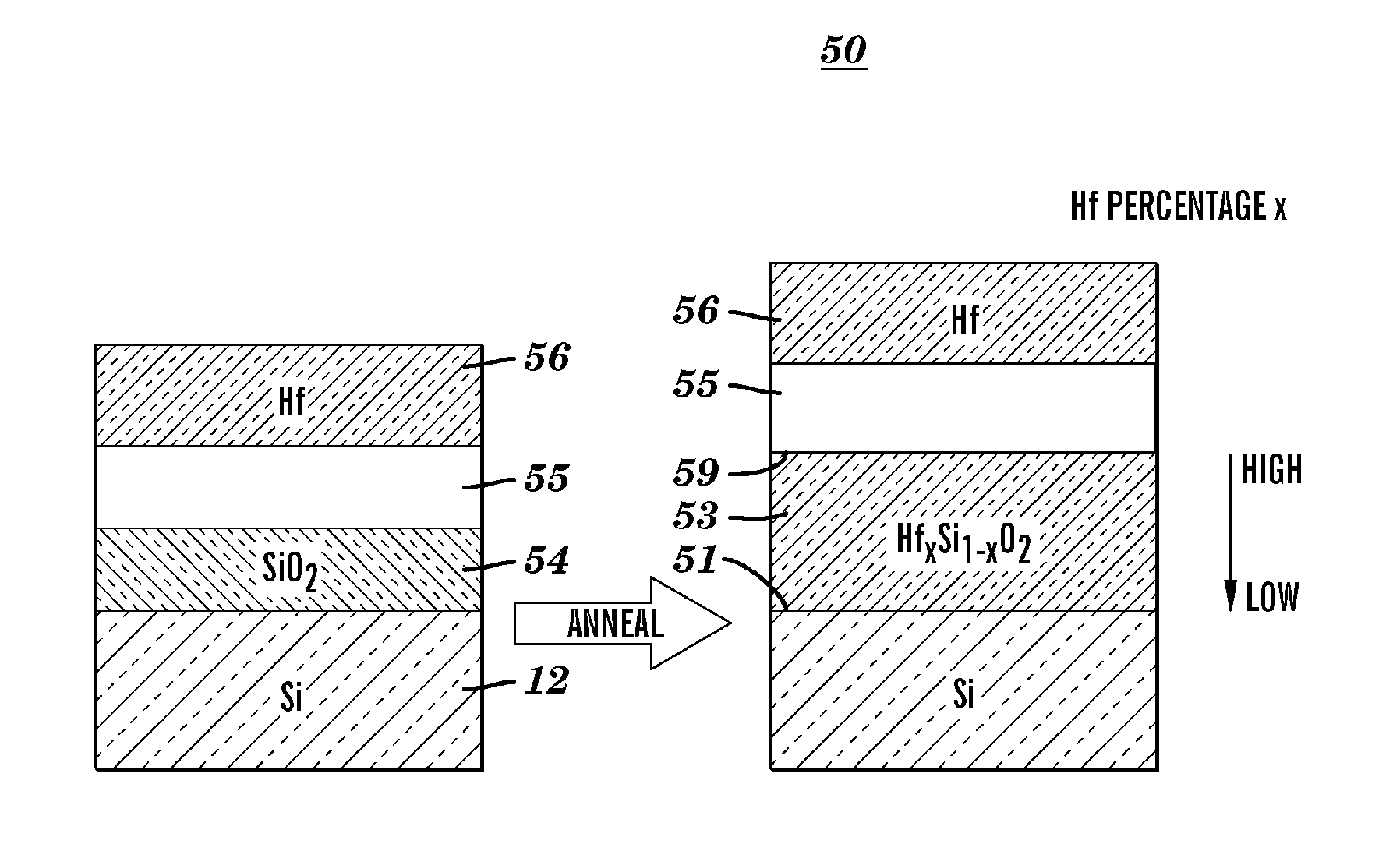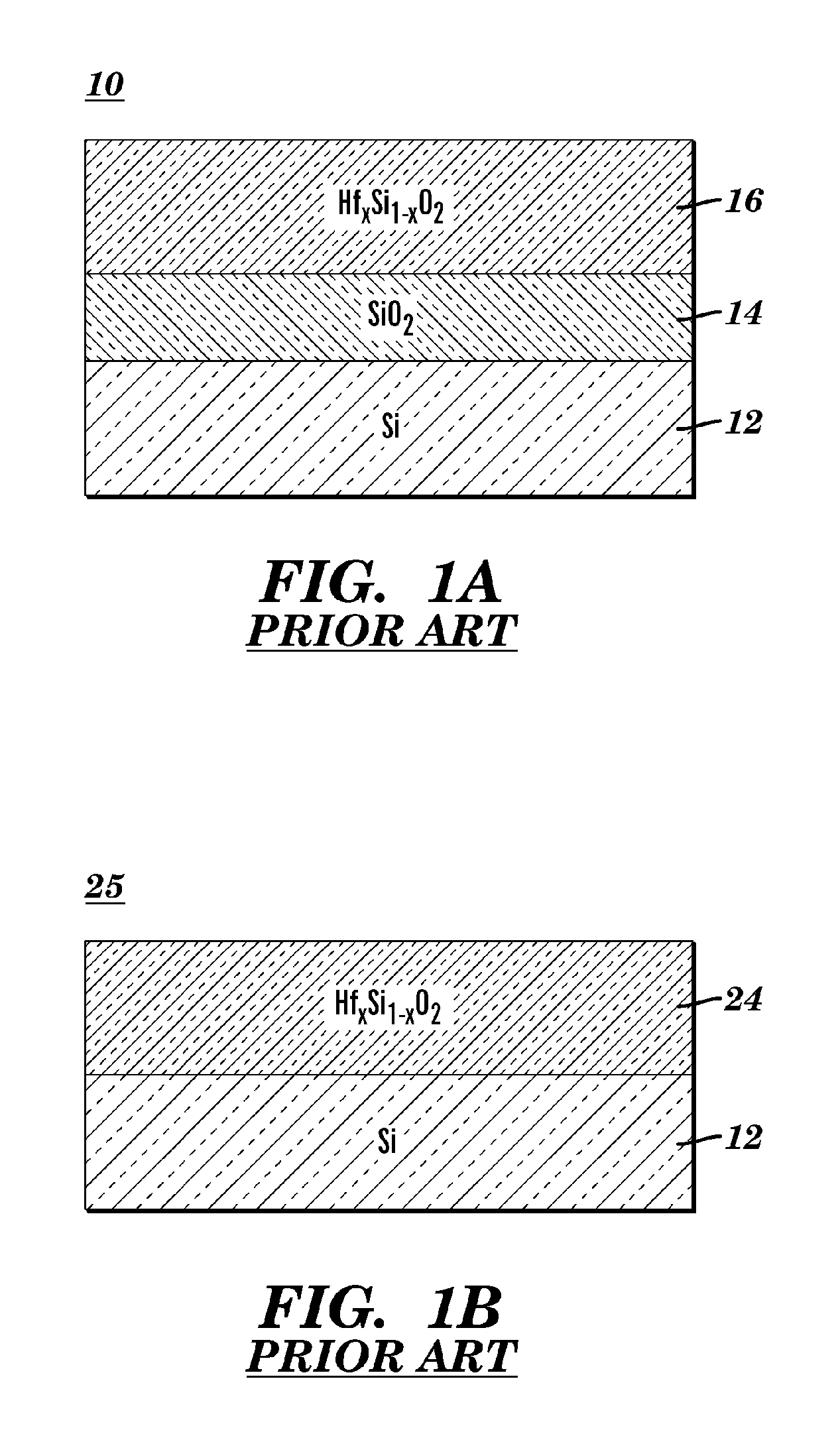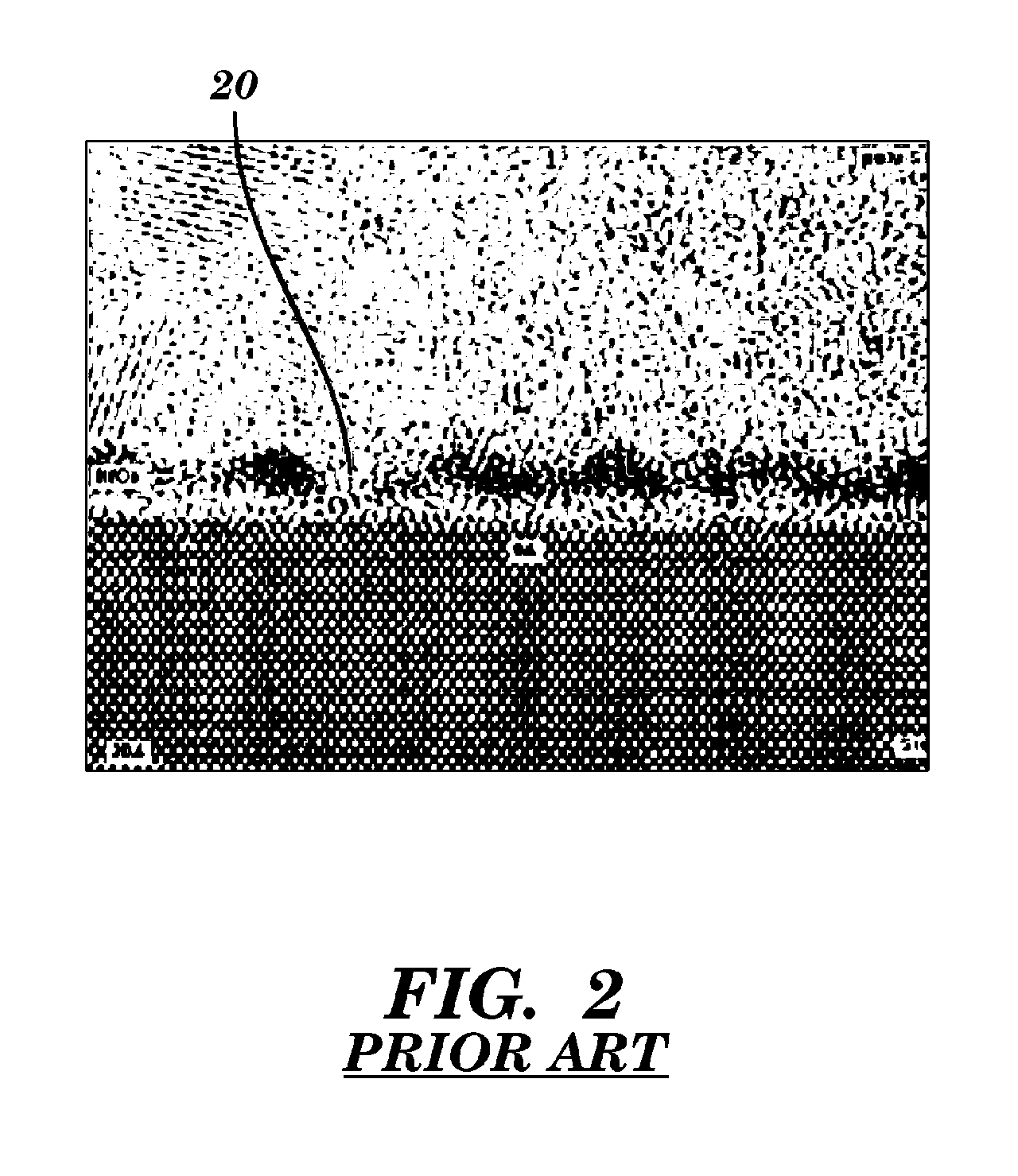ULTRA-THIN Hf-DOPED-SILICON OXYNITRIDE FILM FOR HIGH PERFORMANCE CMOS APPLICATIONS AND METHOD OF MANUFACTURE
a technology of oxynitride and silicon dioxide, which is applied in the field of semiconductor field effect transistor (mosfet) structures of complementary metal oxide semiconductors, can solve the problems of channel mobile charge scattering, gate structure, conventional method of manufacture, and traditional oxynitride as a gate dielectric material is reaching its technological limits, and achieves the effect of further tinv scaling and device performance enhancemen
- Summary
- Abstract
- Description
- Claims
- Application Information
AI Technical Summary
Benefits of technology
Problems solved by technology
Method used
Image
Examples
first embodiment
[0046] In a first embodiment, layer 55 is sacrificial and is selected from the following two groups: inert semiconductors and inert metals. Chemical inertness is specified with respect to the layer 54. For instance, germanium (Ge), a preferred representative of the inert semiconductor group, is a relatively stable material with respect to layer 54 and can be very selectively removed in a solution of hydrogen peroxide. A diffusion-controlling Ge layer can be deposited in commercially available CVD reactors using a GeH4 gaseous precursor. Layer 55 is made thick enough (preferably thicker than approximately 100 Å) to circumvent Ge film islanding in the ultra thin regime due to uneven germanium nucleation on the surface of layer 54.
[0047] The preferred inert metals comprise refractory metals and their metallic compounds such as nitrides. These metallic compounds can be selectively removed using a solution of sulfuric acid. Most preferably, the inert metal comprises tungsten (W), molybde...
second embodiment
[0048] In a second embodiment, layer 55 is selected to yield a gate electrode having a suitable work function. Layer 55 can comprise various elemental metals and metallic compounds (e.g. silicides, nitrides, borides, and carbides) which are chemically inert to both layer 54 and transitional metal atoms such as Hf, Ti, La, and Zr. In this case, the material of layer 55 is selected similar to that of a metal gate electrode, that is, its Fermi level is aligned with either conduction or valence band of silicon for conventional NFETs and PFETs, respectively. For example, tungsten nitride with high nitrogen content can be employed as a PFET-compatible gate electrode. Accordingly, layer 55 can comprise WN in the case of PFET devices. In another example, tantalum nitride (TaN) can be employed as a NFET-compatible gate electrode. Accordingly, layer 55 can comprise TaN in the case of NFET devices. While there are many alternative materials for both NFET-compatible and PFET-compatible gate ele...
third embodiment
[0049] In a third embodiment, layer 55 is used to form a gate electrode after reaction with layer 56. Layer 55 is selected to yield a correct work function of the resultant gate electrode. For example, layer 55 can comprise silicon such as amorphous or polycrystalline silicon. Silicon-based layer 55 can be deposited in a low pressure CVD (LPCVD) reactor using silane SiH4 as a silicon precursor. In a typical LPCVD reactor, layer 55 can be made as thin as approximately 50 Å without any loss of continuity. Silicon-based layer 55 can be converted into a silicide-based gate electrode yielding a Fermi level close to the middle point of silicon bandgap. The mid-gap gate electrode is particularly useful for transistors having fully depleted bodies known as fully-depleted transistors.
[0050] Returning to FIG. 5, a source of transitional metal atoms 56 is then formed on top of layer 55. Layer 56 preferably comprises an elemental metal such as Hf, Ti, La, Zr, or an alloy thereof. The metallic l...
PUM
 Login to View More
Login to View More Abstract
Description
Claims
Application Information
 Login to View More
Login to View More - R&D
- Intellectual Property
- Life Sciences
- Materials
- Tech Scout
- Unparalleled Data Quality
- Higher Quality Content
- 60% Fewer Hallucinations
Browse by: Latest US Patents, China's latest patents, Technical Efficacy Thesaurus, Application Domain, Technology Topic, Popular Technical Reports.
© 2025 PatSnap. All rights reserved.Legal|Privacy policy|Modern Slavery Act Transparency Statement|Sitemap|About US| Contact US: help@patsnap.com



